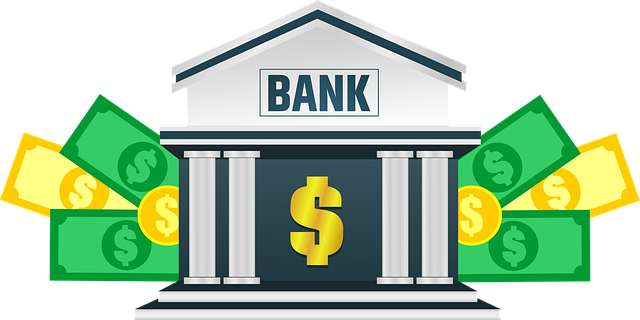equipment financing through loans empowers businesses to acquire machinery and technology without upfront cash strain, offering strategic investment and improved cash flow management. By comparing options from banks, credit unions, or specialized companies, preparing financial documents, and negotiating terms, startups and established firms can access cutting-edge equipment while maintaining flexibility in response to market dynamics.
In today’s competitive business landscape, staying agile is key to growth. Meet your company’s needs with flexible equipment financing, a powerful tool for unlocking expansion and adapting to market changes. This comprehensive guide explores equipment loans as a strategic solution for businesses seeking to acquire essential machinery, tools, or vehicles without breaking the bank. From understanding finance equipment principles to navigating acquisition strategies and securing funding, we provide insights for informed decisions.
- Understanding Equipment Financing: Unlocking Business Growth
- Benefits of Equipment Loans for Businesses: A Flexible Solution
- Navigating Equipment Acquisition: Strategies and Best Practices
- How to Secure Equipment Financing: A Step-by-Step Guide
Understanding Equipment Financing: Unlocking Business Growth

Equipment financing is a powerful tool that can unlock significant growth opportunities for businesses. It refers to the process of obtaining funds to purchase or upgrade essential business equipment, such as machinery, vehicles, or technology. By leveraging equipment loans, businesses can acquire the necessary assets without straining their cash flow or incurring substantial upfront costs. This approach allows companies to access cutting-edge technologies and specialized machinery, enabling them to stay competitive in their industries.
Through equipment acquisition, businesses gain flexibility in managing their finances and operations. They can spread out the cost of significant investments over time, making it more manageable. Moreover, these loans often come with customizable terms and conditions, allowing companies to align repayment schedules with their cash flow patterns. This financial agility is particularly beneficial for startups or established firms seeking to expand their equipment fleet to meet growing demands.
Benefits of Equipment Loans for Businesses: A Flexible Solution

Equipment loans offer a flexible solution for businesses seeking to acquire new or used machinery and technology. By leveraging this financing option, companies can access the necessary capital to invest in equipment, which is often crucial for growth, efficiency, and staying competitive in the market. One of the significant advantages is the ability to spread out payments over time, making it a more budget-friendly approach compared to traditional one-time purchases or cash transactions.
This financing method provides businesses with the freedom to choose the equipment they need without the burden of immediate full payment. It allows for strategic investments, enabling companies to access cutting-edge technology and modern machinery that can drive productivity and innovation. Moreover, equipment loans often come with flexible terms, including customizable repayment schedules and interest rates tailored to individual business needs, ensuring a better cash flow management experience.
Navigating Equipment Acquisition: Strategies and Best Practices

Navigating Equipment Acquisition involves a strategic approach to meet business needs efficiently and effectively. Businesses often require specialized equipment for operations, but traditional purchasing methods can be cumbersome and limit flexibility. This is where equipment loans and finance equipment solutions step in as powerful tools. By leveraging these options, companies can acquire the necessary machinery without tying up substantial capital, allowing for greater agility in responding to market dynamics.
Best practices in equipment acquisition include assessing immediate and future business needs, comparing various financing options, and negotiating terms to ensure affordability. Smart businesses also explore alternative leasing models that offer benefits like regular equipment updates, tax advantages, and reduced maintenance burdens. These strategies empower organizations to access the latest technologies while maintaining financial flexibility, ultimately driving operational excellence and competitiveness in today’s dynamic market.
How to Secure Equipment Financing: A Step-by-Step Guide

Securing equipment financing for your business doesn’t have to be a complex process. Here’s a step-by-step guide to help you navigate this option:
1. Define Your Needs and Budget: Start by clearly outlining what equipment you need and its estimated cost. Create a detailed budget that includes not just the purchase price, but also any installation or setup costs. Understanding your exact requirements will make it easier to determine the right financing solution.
2. Explore Equipment Loans Options: Research various lenders offering equipment loans, including banks, credit unions, and specialized finance companies. Compare their interest rates, loan terms, and any additional fees. Different lenders may cater to specific industries or have unique offerings, so shop around to find the best fit for your business needs.
3. Prepare Your Financial Documentation: Gather essential financial records such as tax returns, profit-and-loss statements, and bank statements. Lenders will use these documents to assess your business’s financial health and determine your creditworthiness. Keeping accurate and up-to-date records will expedite the financing process.
4. Apply for Equipment Financing: Complete the loan application provided by your chosen lender. Provide all the required information honestly and accurately. Be prepared to answer questions about your business, industry, and equipment needs. The lender may also request references or additional documentation for verification.
5. Negotiate Terms and Rates: Once approved, review the loan offer carefully. Understand the interest rate, repayment terms, and any collateral requirements. Don’t hesitate to negotiate if you believe certain terms are unfair or can be improved upon. A clear understanding of the financing agreement is crucial before finalizing the deal.






